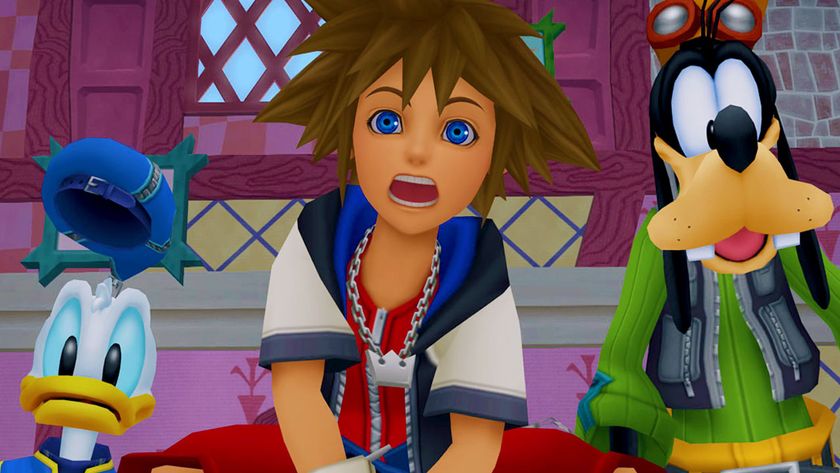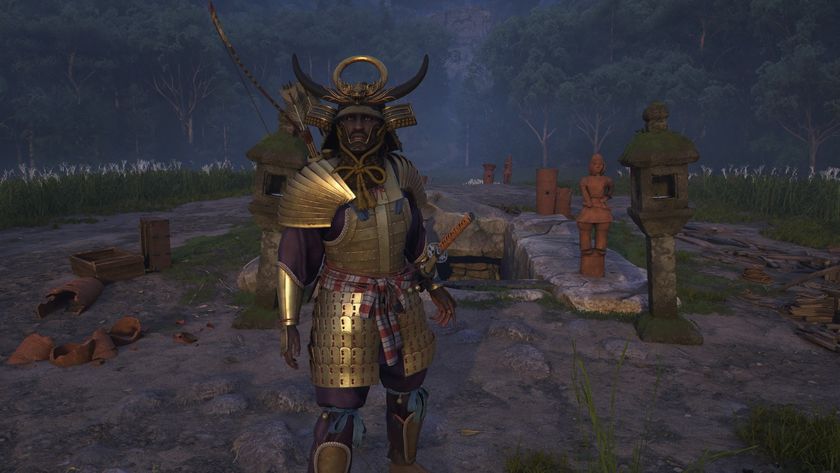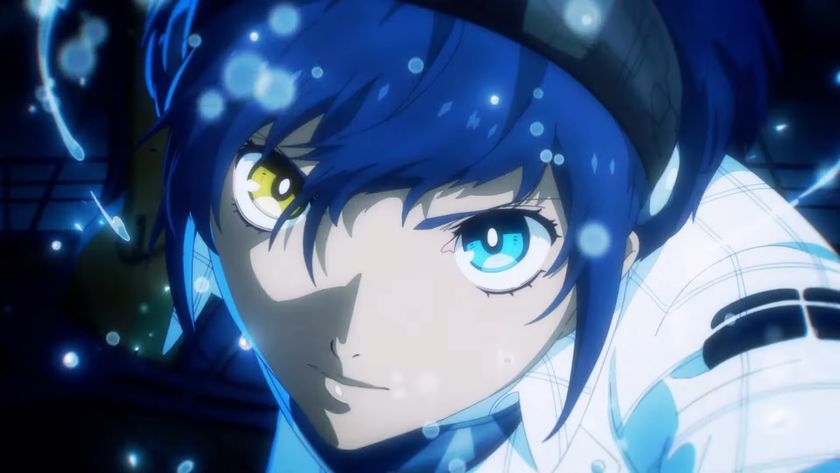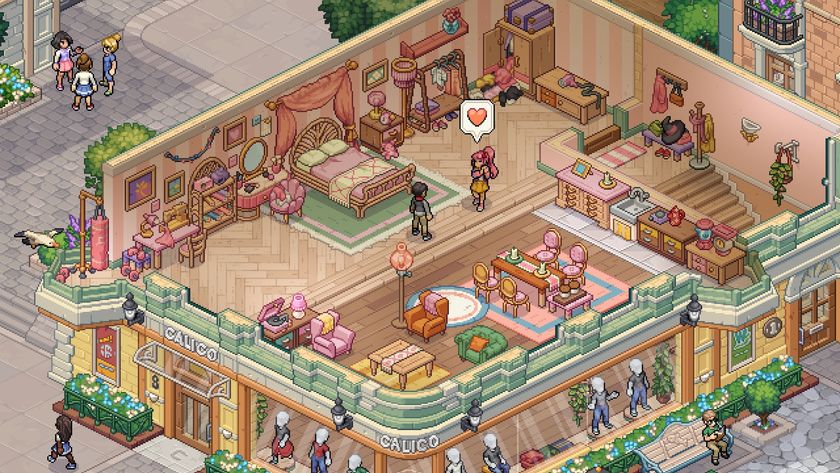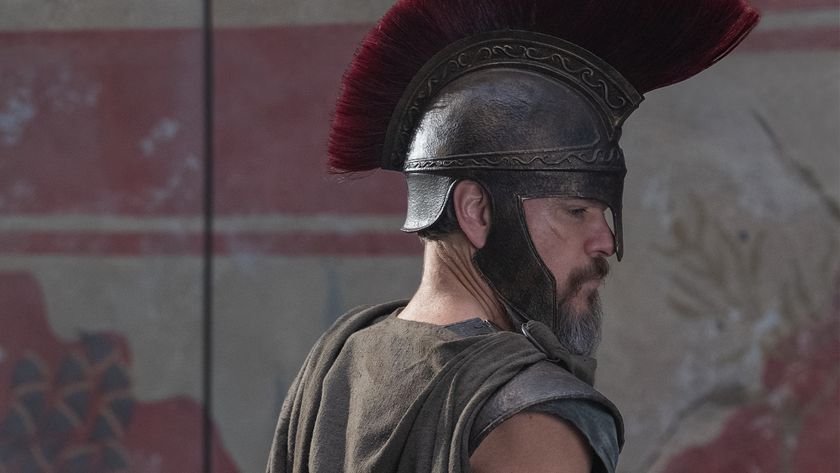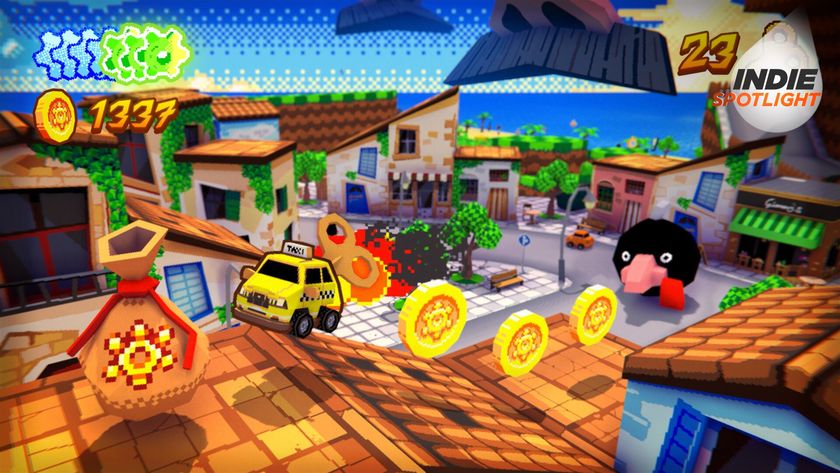Genshin Impact devs on swapping open worlds and real-time combat for deftly assembled dungeons in Honkai Star Rail
Interview | HoYoverse on creating Honkai Star Rail: a spacefaring RPG to stand alongside Genshin Impact
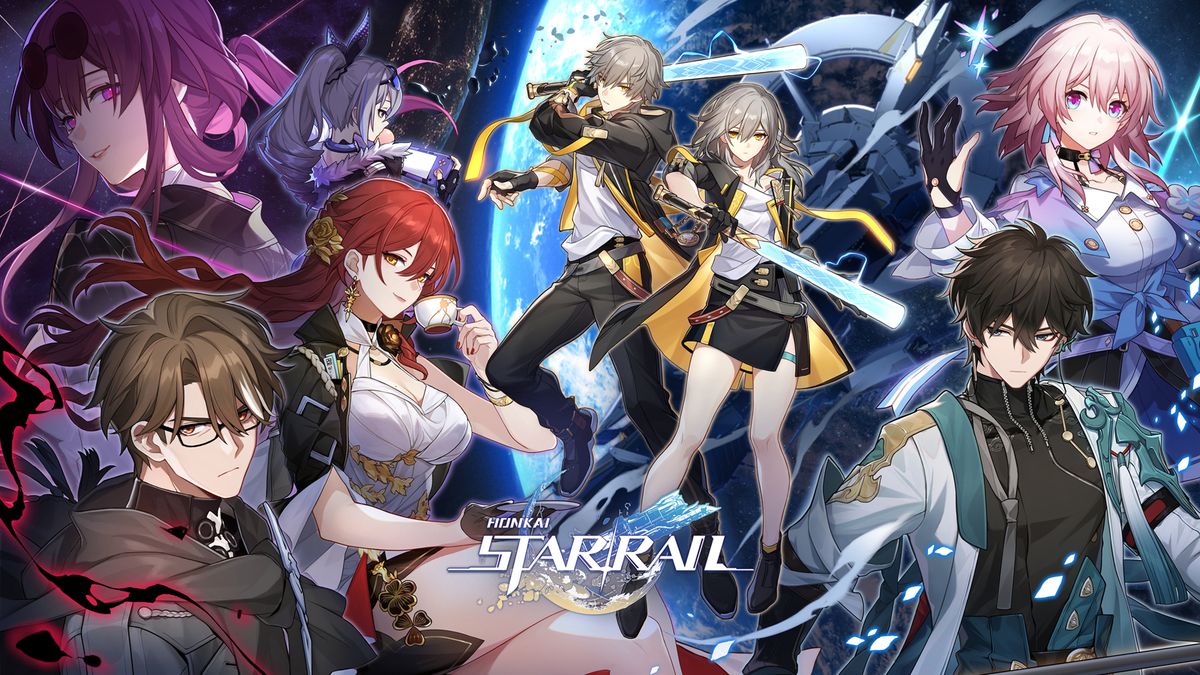
Few free-to-play games have managed to appeal to PlayStation players as strongly as Genshin Impact. HoYoverse's debut on the console has offered constant updates, compelling combat, and a sweeping adventure that easily surpasses 100 hours - all for the grand cost of nothing. (Like all free-to-play games, there's monetisation through lootbox-like gacha elements, cosmetics, and such, though its generosity is part of its appeal.) So, with such a massive success on its hands, how is the developer going about launching a new game to stand beside it?
Honkai: Star Rail is the new game, and has about as many differences to its sister game as it does similarities. Freshly launched on PS5 and PS4 in October, it's a science-fiction turn-based RPG where you (an amnesiac hero, either male or female, with a fierce baseball bat) and your fellow trailblazers hop from planet to planet on space train The Astral Express, solving cosmic problems before choo-chooing into the sunset to tackle the next one. We spoke with HoYoverse (which asked to be credited as a studio only) to take a look at what this locomotive is packing under its smokestack.
World shaping
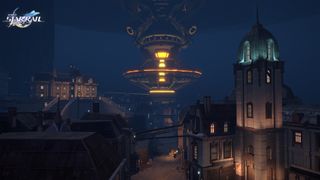

This feature originally appeared in Play Magazine. For more in-depth features, reviews, interviews, and more delivered to your doorstep or digital device, subscribe to Play Magazine.
"Classic sci-fi concepts like 'venturing into the stars and discovering civilisations scattered throughout the universe' inspired the background of Honkai: Star Rail," share the team about the almost Star Trek-like setup. On the hunt for Stellarons, corruptions that fragment the universe around them (one of which has been absorbed into your main player character, The Trailblazer, which is why they have no memory of their past), the train's crew explores not just different worlds but cultures too.
Of course, we have to ask about the engine in the room – why set the game on a space train? "To embark on such a grand exploration across the mysterious universe, the core component, a vehicle to accompany you along the way, is vital!" they say. "That is why the team spent hours trying to figure out an exciting and fun method to travel through the galaxy. A spaceship is apparently a common choice - however, we believe it can be a little too hardcore, not novel or cool enough."
The team acknowledge that space trains have appeared in science- fiction before, but the idea to use it has a more straightforward origin: "Many members of the team love taking vacations by train!" they say. Of course, this meant research and trips to make sure it felt right. "Upon experiencing a trip by train for ourselves, we were blown away by the magnificent scenery along the way," they say. And it adds an element of whimsy to the setting by itself, encapsulating the 'space fantasy' the team were aiming to convey.
Though the turn-based, four-party-member fights are new to the studio, many members of the team are fans of other games in the genre. "The fun of turn-based strategy games lies in developing a well-planned strategy to earn subsequent victory," they say. It empowers players to come up with new strategies and implement them each turn. "Our goal was to create a title of variety to enrich our players' options and experiences."
It's also ensured the game has broad appeal. "Turn-based games may be easier to learn and pick up to a certain amount of gamers," they share. "It is also more accessible to users with a sporadic playstyle: they can easily enjoy pausable battles any time on the commute to work or during a break!" But the team have also added their own twists on long-standing traditions to make the turn-based combat the kind they would most want to play.
Sign up to the 12DOVE Newsletter
Weekly digests, tales from the communities you love, and more
For example, they point out in Honkai: Star Rail you're able to interrupt turns to use an ultimate attack instantly, and you can use character abilities to provide buffs when you enter combat with advantage (like a speed power- up or turning some foes into ice from the off ). "With that as a foundation, we've added exploration, puzzles, roguelike features, and real-time action elements to create a richer gaming experience, even for the hardcore gamers," they say.
Cosmic fisticuffs
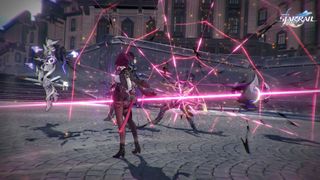
So will we just be doing the same thing fight after fight? Not really Beyond the story pushing you into new areas and challenges, frequently updated side-activities add further twists that increase replayability. The Forgotten Hall, for instance, offers puzzle-like fights that see you using buffs to your advantage, and the Simulated Universe is a roguelike where the bonuses you accrue change from run to run. The tactical possibilities open to you in combat are constantly evolving too.
"We're trying our best to release characters with different functions in combat, allowing players to build their team with total freedom and discover the playstyle that most suits them," share the team. Though you'll have to be lucky enough to successfully earn them through random pulls that use an in-game currency (which you can also, of course, buy). Characters like Seele, who can earn a bonus turn when defeating an enemy, Blade, who can trade HP to increase his damage, and Dan Heng's Inhibitor Lunae form, who can use a skill to alter the properties of his basic attack, offer some compelling reasons to rethink and reoptimise your strategies.
While Star Rail doesn't feature the huge open worlds of Genshin Impact, it's no less for it. In fact, the more contained nature of the maps that make up each major area, from planets to space stations, is employed to "[allow] players to experience completely different settings, such as the Herta Space Station floating in space, the Great Mine buried deep underground in Jarilo VI, and the Divination Commission overlooking the stars," according to HoYoverse.
"The distances and differences between these maps are enormous, giving players a greater sense of surprise and exploration," they say. "Also, because the maps' route is relatively strict, it offers a more maze-oriented experience, enhancing the fun of solving tricks and puzzles."
These range from off-the-beaten-path treasure to full-on puzzle minigames like rearranging a cube to match an image. But it's the sheer range of beautiful environments that most immediately impresses, with some really inventively realised interstellar societies. The Xianzhou Luofu is a standout, translating traditional Chinese aesthetics into a futuristic style the team call 'silkpunk', with high-tech fortune telling and flying starskiffs to zip from point to point. "We strive to showcase the unique style of each region, enhancing the realism of interstellar travel for players," they say.
New Worlds
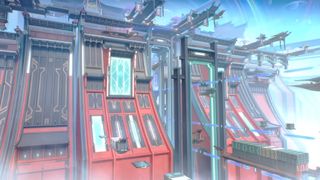
For the most part, you'll be journeying through these maps and battling with your party of colourful characters. The ones you're using are at an abstract remove from the story playing out, so expect to see the Astral Express crew in cutscenes as they meet and journey with characters from the societies in which they've arrived to lend a helping hand. But, with some regularity, the story does bleed through into the mechanics, with special sequences putting you in control of fixed parties – for instance, you'll play through the adventure Dan Heng is having while he's separate from you during your time on the Xianzhou Luofu – or giving you special moves or fighters for certain bosses.
Sometimes that layer of abstraction can free the team to make big moves with the storytelling - huge moments altering the lives of some major characters, but still allowing you to use the characters you've earned in fights. Obviously we're dancing around some major spoilers here, but this even extends to some interesting choices such as allowing multiple versions of the same character (which so far just includes the regular Wind/The Hunt version of Dan Heng and his Inhibitor Lunae form, which allows him to fight with Imagination/Destruction element-based moves).
With new characters being added constantly, how does the studio balance the ever-expanding roster of recruits? "It's technically unviable to give every character substantial screen time in the main questline," they say. "Therefore, we strive to enrich each character's stories through side-quests and events. For example, Yukong is a seasoned pilot
fighter, but her military past and her personal life as a caring mother were only briefly mentioned in the main story. That is why we took the chance to develop her stories in the companion mission 'For I Have Touched The Sky.'" This extends into things like limited events too, in similar fashion to Genshin Impact. "Sushang is a rookie who just joined the Cloud Knights. Her passion and love of the Xianzhou are mainly showcased in 'Aurum Alley's Hustle And Bustle' event," the team say.
In the stars

Appealing characters need good writing, and Star Rail has it in spades, mixing shocking moments of drama with truly surreal moments of comedy via exploring even minor parts of the environment. One sequence has you hiding inside a delightfully scented hotel wardrobe as you become increasingly paranoid about the service staff; another rewards you with increasingly humorous dialogue as you keep investigating a bin until you become compelled to dig through its contents.
The game is packed with charm and personality at every turn. "We wanted to provide a galactic adventure full of fun and laughter,” the team shares. “To be honest, we did not anticipate the level of attention that our trashcan jokes would receive during the ideation stage and we were absolutely delighted to see the overwhelming response to them.”
But it's important to get the big moments right as well, and the team don't want to shy away from using their storytelling to explore big issues. "The planet Jarilo VI is the first stop on our interstellar journey, featuring a storyline that explores poignant themes such as post-apocalyptic survival, conflicts between Overworlders and Underworlders, and the overuse and depletion of resources," they share. "And on the Xianzhou Luofu, the costly conflicts stemming from the question of immortality came to a temporary and tragic end."
Though Honkai: Star Rail stands on its own, the team have tapped into lessons learned from Genshin Impact, both through player feedback and their own experience. "One of these lessons was that quality content is critical to the success of a game throughout its life cycle," they say. You can't skimp on giving players great stuff to play. That includes diversions like the Everwinter City Museum Ledger Of Curiosities that came in 1.1, which adds a museum management mode where you can learn more about the history of Jarilo VI and the capital of Belobog, where the first major arc of the story takes place, by restoring exhibits. Tweaks have even been made to things like energy caps in response to player feedback. Making sure that high-quality content is accessible to all is key.
The future frontier

"Thanks to the cutting-edge technology and hardware capabilities of PlayStation 5, we are empowered to push the boundaries of the game design, enhancing the overall visual presentation and special effects"
HoYoverse
After all, the core story, like in Genshin Impact, never costs a thing. The team are well aware of the pitfalls and criticisms of free-to-play game monetisation. In-game messages encourage players to spend responsibly if they use microtransactions, but HoYoverse has found the best way to stop players feeling nickel-and-dimed is simply to be generous. "We provide Trailblazers with diverse methods to obtain Stellar Jades and Star Rail Special Passes. Furthermore, we are dedicated to expanding opportunities for players to access in-game resources and characters," say the team.
It's true that from what we’ve played so far new characters and resources have been heaped upon us, one generous event giving way to another relatively promptly. And simply playing story updates and events gives you some of the best rewards of all, encouraging players to spend the most time playing the best bits rather than simply grinding. "By ensuring a certain level of player engagement, we aim to deliver abundant rewards and foster a positive gaming experience for all our players," they share.

But Star Rail is also about embracing some of the randomness. In some ways, the characters you randomly obtain early on in the game can prove quite special, as they help you build a team that can feel uniquely your own as you journey forth. Elements like the Simulated Universe, a roguelike mode that offers frequently refreshing rewards (and requires no energy to play), lean into this, making you choose which of your characters you add to your party as you fight through semi-randomised maps and enemies, gaining mode-specific abilities in the process.
"The unpredictability prompts players to adapt to diverse adversaries, acquaint themselves with enemies' weaknesses, and strategically utilise their existing resources," they say, like special objects that can, say, enhance your power based on the number of destructible items you've smashed up that run.
"The element of strategy in these decisions adds an enjoyable layer to the gameplay, ensuring it remains engaging for all. Moreover, the inherent randomness adds excitement, as players are constantly intrigued by the unknown maps, events, enemies, rewards, and treasures that lie ahead."
The team have found PS5 to be a great home for the new game. "Thanks to the cutting-edge technology and hardware capabilities of PlayStation 5, we are empowered to push the boundaries of the game design, enhancing the overall visual presentation and special effects," they share, giving the example of the Alchemy Commission where "we’ve harnessed pre-baked motion data to depict the motion details of the sea surface across various depths and wavelengths" in order to dynamically refract and reflect light. It's also made it possible to add volumetric fog to the area, the presence of which is an important part of the storyline.
And, perhaps most importantly, the lightning-fast loads help you to jump from planet to planet at a moment's notice. It's here on PS5 to stay, too. "[Honkai: Star Rail’s] debut on PS5 is merely the starting point, and we are committed to continually absorbing player feedback to further enhance and optimise the in-game experience on the platform." Next stop: who knows? – but we'll be along for the ride.
This feature originally appeared in issue 33 of Play Magazine. For more fantastic features, interviews, and more, subscribe to Play Magazine today.

Games Editor Oscar Taylor-Kent brings his Official PlayStation Magazine and PLAY knowledge to continue to revel in all things capital 'G' games. A noted PS Vita apologist, he's always got his fingers on many buttons, having also written for Edge, PC Gamer, SFX, Official Xbox Magazine, Kotaku, Waypoint, GamesMaster, PCGamesN, and Xbox, to name a few.
When not knee deep in character action games, he loves to get lost in an epic story across RPGs and visual novels. Recent favourites? Elden Ring: Shadow Of The Erdtree, 1000xResist, and Metaphor: ReFantazio! Rarely focused entirely on the new, the call to return to retro is constant, whether that's a quick evening speed through Sonic 3 & Knuckles or yet another Jakathon through Naughty Dog's PS2 masterpieces.
